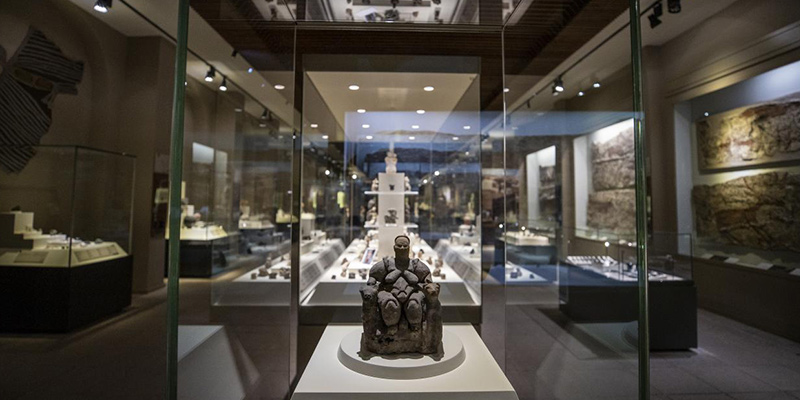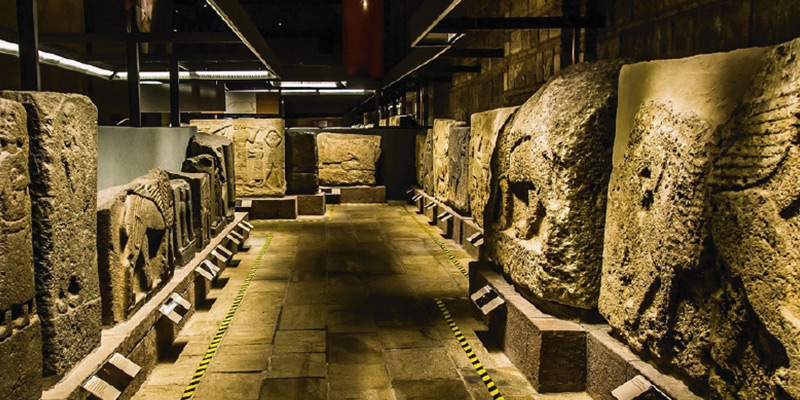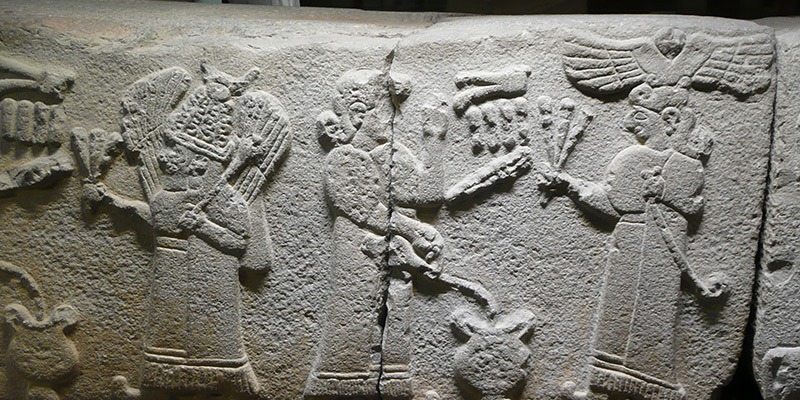The Anatolian Civilizations Museum was established in Ulus District of Ankara, next to Ankara Castle, in the historical Mahmut Pasha Bedesten and Kursunlu Inn. Ataturk demanded that the historical artifacts collected from Anatolia be collected for display and as a result of many years of work, these two historical buildings were collected and turned into a museum. On the one hand, while the repair of the bed and the inn was made, on the other hand, the works were placed. In 1943, the Anatolian Civilizations Museum was opened to visitors. In 1968, the museum construction was fully completed.
Today, Kursunlu Han is used as the administrative building of the museum, and Mahmut Pasha bedesten is used as the exhibition exhibition hall. The oldest works exhibited in the Anatolian Civilizations Museum, which was selected as the museum of the year in Europe in 1997, belong to the Paleolithic period. In the museum, each era works are exhibited as grouped in separate sections.
Anatolian Civilizations Museum – Paleolithic age section

The Paleolithic Age is divided into four parts in itself. These are the Lower, Middle, Upper and Epipaleolytic periods. The works from the paleolithic age section of the Anatolian Civilizations Museum are exhibited in the order of the period. Certain paleolithic age remains, tools made of stone used for animal hunting, collecting plant roots, small stone tools used as weapons of the epipaleotic period, tools made by burning from flint, quartz and radiolarite are exhibited.
Neolithic age section

In this section, tools made of bone, flint and obsidian, pottery, pottery, vessels, ornaments, human and animal figures made of baked clay and stone are exhibited. These works were excavated from Catalhoyuk and Hacilar excavations.
One of the most important works belonging to the Neolithic age exhibited in the museum is the wall painting in Catalhoyuk, which is thought to be the oldest city plan in the world.
Chalcolithic age section

The Chalcolithic Age between 5.500-3.000 BC is the period when the urbanization was passed from the village. From agriculture and animal husbandry to production, weaving, ceramics making and mining work. In this section of the Anatolian Civilizations Museum, red lined, burnished, geometric patterned vessels are exhibited. These are the works found in Hacilar excavation. In addition, copper wand stone extracted from Canhasan and stone and metal seals from Alisar are laid.
Early bronze age section
The works from the Early Bronze Age dating back to 3000-1950 BC are exhibited in this section. The works collected from Alacahoyuk, Horoztepe, Eskiyapar, Karaoglan, Ahlatlibel, Beycesultan, Karatas-Semayuk, Hasanoglan excavations and works from different regions of Anatolia are exhibited.
The main works exhibited in this section are Alacahoyuk and Horoztepe King Tombs, Horoztepe and Hasanoglan figurines, religious ceremonial objects made of mines such as bronze, gold and silver in Eskiyapar, jewelery such as pins, metal vessels.
Anatolian Civilizations Museum – Assyrian trade colonies section
It is the period of the beginning of 2000 BC. The Middle Bronze Age began with this 200-year period. The most important feature of the period was the cuneiform with the Assyrians who came to Anatolia for trade, and thus written history began.
In this section of the Anatolian Civilizations Museum, lead god-goddess figurines and statuettes, vessels made of terracotta and stone, seals, cosmetic boxes, gold jewelry, bronze tools and weapons are exhibited.
Apart from these, Kultepe tablets are the oldest written documents of Anatolia. In addition, animal-shaped ceremonial bowls, cuneiform bronze dagger belonging to the Poodle King Anitta, ivory box are important works of the museum.
Hittite Department

The Hittite State ruled in Anatolia between 1750-1200 BC. In this period, Anatolia started to be managed with a central system for the first time. Hittite art has created original works of this period. These works are exhibited in the Hittite Department of the Anatolian Civilizations Museum. Believable Vase, cuneiform clay tablets, ivory, gold and bronze goddess-figurine figurines made of ivory, gold and bronze figurines made of gold, bronze tablets and letter of friendship written by the Egyptian Queen to the Hittite Queen are among the important works of Hittite art. artifacts. These works were excavated from the Hittite centers, Bogazkoy, Inandik, Eskiyapar, Alacahoyuk, Alisar, Ferzant, Masathoyuk excavations.
Phrygian Division
With the fall of the Hittite Empire, the Phrygian Period began in 1200 BC. In the researches conducted in the excavations, it was understood that the works made in this period differed from the previous ones. The reason for this is the arrival of a new community in Anatolia. This community is also Phrygians. From the ruins from the excavations, they created differences in the forms of ceramics and ornamentation, where the Phrygians were advanced in mining and woodworking.
You can click Antalya Museums.

